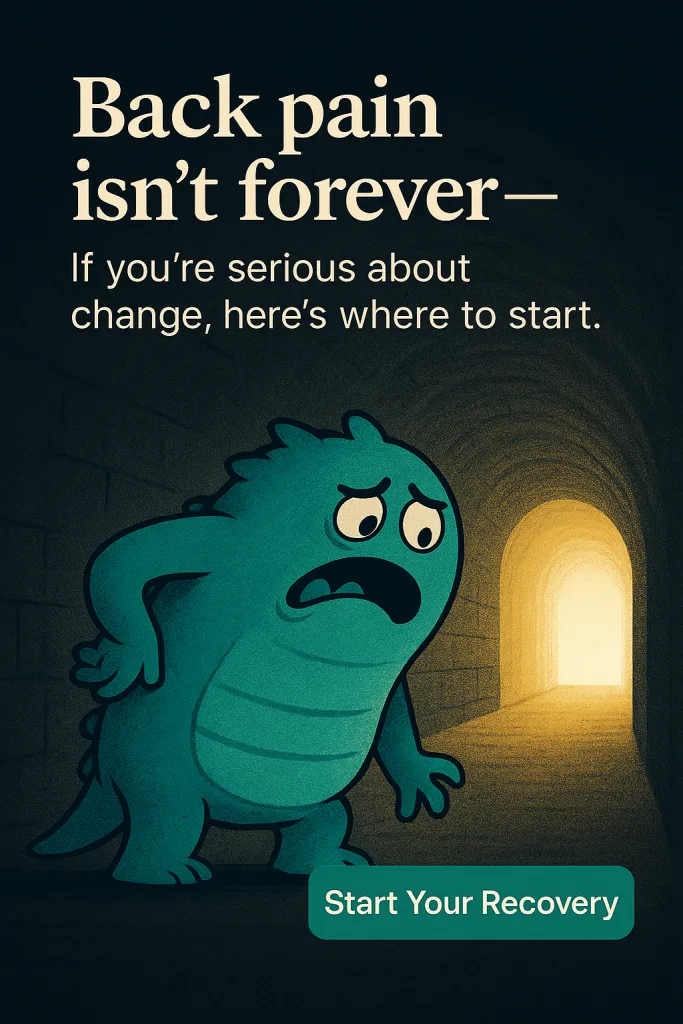Natural Sciatic Pain Relief in 10 Minutes
Find quick relief from sciatic nerve pain with these simple, natural methods you can do at home in about 10 minutes:
- Quick Stretches: Gentle movements like Piriformis, Figure-4, or seated glute stretches.
- Heat & Cold Therapy: Alternate cold packs and heat pads for inflammation and muscle relaxation.
- Gentle Walking: A short walk helps release pressure and boosts blood flow.
- Water Therapy: Swimming or floating removes pressure from the spine.
- Deep Breathing: Relaxation techniques can help manage pain perception.
- Acupressure: Apply gentle pressure to specific points for quick relief.
Remember to move gently and stop if pain increases. Consistency is key. Consult a professional for persistent or severe pain.
Are you among the millions who wince with each step due to shooting pain down your leg? Sciatic nerve pain can turn simple activities into painful ordeals, but relief might be closer than you think. Research shows that specific natural techniques can ease sciatic discomfort in as little as 10 minutes!
The sciatic nerve, your body’s longest and widest nerve, runs from your lower back through your hips and buttocks down each leg. When this nerve becomes irritated or compressed, the resulting pain can range from mildly annoying to completely debilitating. According to the NHS, up to 40% of people will experience sciatica at some point in their lives.
Let’s explore how you can find quick, natural relief without reaching for medication or contemplating surgery. These methods are backed by research and can be done right at home!
Piriformis Stretch
Sit on a chair, cross affected leg over opposite knee, lean forward with straight back. Hold 30 seconds, repeat 3 times. Can reduce pain by up to 70%.
Figure-4 Stretch
Lie on back, cross one ankle over opposite thigh, pull uncrossed thigh toward chest. Hold 30 seconds each side. Excellent for releasing buttock tension.
Seated Glute Stretch
Sit with legs extended, bend one knee, place opposite elbow outside bent knee, twist gently. Hold 20-30 seconds per side. Relieves pressure on sciatic nerve.
Cold Therapy (First 72 Hours)
Apply wrapped ice pack to painful area for 15-20 minutes. Allow skin to return to normal temperature before reapplying. Repeat every 2-3 hours.
Heat Therapy (After 3 Days)
Use heating pad or warm towel for 15-20 minutes. Maintains comfortable temperature. Take 1-hour breaks between applications to improve circulation.
DIY Options
No heating pad? Fill a sock with uncooked rice, microwave 1-2 minutes. For cold therapy, frozen peas conform well to body contours.
10-Minute Walking
A gentle, short walk promotes circulation and helps release pressure on the sciatic nerve. Keep pace comfortable and stop if pain increases.
Water Therapy
Swimming or floating for just 10 minutes removes pressure from your spine, allowing the sciatic nerve to decompress naturally.
Breathing Technique
Find comfortable position, breathe deeply for count of 4, exhale slowly for count of 6. Continue 5-10 minutes to change how brain processes pain signals.
Common Causes
Herniated discs, spinal stenosis, piriformis syndrome, or pregnancy. Risk increases after age 40, with excess weight, prolonged sitting, or heavy lifting jobs.
Identifying Symptoms
Pain radiating from lower back down one leg, numbness/tingling in affected leg, pain worsening when sitting. Often described as sharp, burning sensation.
When to Seek Help
Consult a professional if pain lasts longer than a week, becomes severe/worsens, or is accompanied by bladder/bowel changes.
What Causes Sciatic Nerve Pain?
Understanding what's happening in your body is the first step toward finding relief. The sciatic nerve begins in your lower spine and travels through your buttock, down the back of your thigh, and splits at the knee to continue to your foot.
Pain occurs when something puts pressure on this important nerve. Common causes include:
- Herniated discs that bulge and press against the nerve root
- Spinal stenosis, a narrowing of the spaces in your spine
- Piriformis syndrome, when a small muscle in your buttocks spasms and irritates the nerve
- Pregnancy, which can change your centre of gravity and put pressure on the nerve
Your risk of developing sciatica increases with age, particularly after 40. Other risk factors include excess weight, prolonged sitting, and jobs that require heavy lifting or twisting.
How can you tell if your pain is truly sciatica? Look for these signs: pain that radiates from your lower back down one leg, numbness or tingling in the affected leg, and pain that worsens when sitting. Some people describe it as a sharp, burning sensation or even "electric shocks" running down the leg.
Quick Stretches for Immediate Sciatic Relief
When sciatic pain strikes, specific stretches can provide almost immediate relief by releasing the muscles compressing your sciatic nerve. These gentle movements take just minutes but can offer hours of comfort.
The piriformis stretch targets a key muscle that often irritates the sciatic nerve. To perform this stretch:
- Sit on a chair with good posture
- Cross the affected leg over your other knee
- Gently lean forward while keeping your back straight
- Hold for 30 seconds, breathing deeply
- Repeat 3 times
Many people find this simple movement brings significant relief. A study from Pain Medicine Consultants found that targeted stretching can reduce sciatic pain by up to 70% when done regularly.
The Figure-4 stretch offers another approach:
- Lie on your back with knees bent
- Cross one ankle over the opposite thigh
- Grasp behind the uncrossed thigh and gently pull toward your chest
- Hold for 30 seconds, feeling the stretch in your buttock
- Switch sides and repeat
For those who prefer seated options, try this glute stretch:
- Sit with legs extended straight
- Bend one knee and place your foot flat on the floor
- Place your opposite elbow on the outside of the bent knee
- Gently twist your torso, looking over your shoulder
- Hold for 20-30 seconds before switching sides
When stretching for sciatic relief, always move slowly and stop if pain increases. These stretches work by gently releasing tight muscles and improving blood flow to the affected area.
Heat and Cold Therapy Methods
Your kitchen freezer and a warm towel might hold the key to quick sciatic pain relief. Heat and cold therapies are time-tested methods that can ease pain in minutes when applied properly.
Cold therapy works best during the first 72 hours after an acute flare-up. Ice reduces inflammation by constricting blood vessels and numbing the area. To apply cold therapy:
- Wrap an ice pack or frozen vegetables in a thin towel
- Apply to the painful area for 15-20 minutes
- Allow skin to return to normal temperature before reapplying
- Repeat every 2-3 hours as needed
After those initial three days, switch to heat therapy. Heat relaxes tight muscles and improves circulation, bringing healing nutrients to the affected area. For effective heat therapy:
- Apply a heating pad or warm towel to the painful area
- Keep the heat at a comfortable temperature to avoid burns
- Use for 15-20 minutes at a time
- Take a break of at least 1 hour between applications
Don't have a heating pad? Create your own by filling a sock with uncooked rice, tying it closed, and microwaving it for 1-2 minutes. For cold therapy, a bag of frozen peas conforms nicely to the body's contours.
Many people find alternating between heat and cold provides the best relief. Harvard Health recommends this combination approach, noting that each person may respond differently to temperature therapies.
Additional 10-Minute Natural Relief Techniques
Beyond stretching and temperature therapy, several other natural approaches can ease sciatic pain quickly. These methods complement each other and can be mixed and matched based on your needs.
Walking might seem counterintuitive when you're in pain, but a short 10-minute stroll can work wonders. The gentle, rhythmic movement helps release pressure on the sciatic nerve and promotes circulation. Keep your pace comfortable and stop if pain increases.
Swimming or even simply floating in water offers almost immediate relief for many sciatica sufferers. The buoyancy removes pressure from your spine, allowing the sciatic nerve to decompress. Just 10 minutes in a pool can provide hours of comfort afterward.
Breathing and relaxation techniques directly affect how your brain processes pain signals. Try this simple technique:
- Find a comfortable position
- Close your eyes and breathe deeply into your abdomen
- Hold each breath for a count of 4
- Exhale slowly for a count of 6
- Continue for 5-10 minutes
Acupressure offers another quick relief option. The point located in the dimple of your buttock (about halfway between your hip bone and tailbone) often corresponds with sciatic pain. Apply gentle, steady pressure with your thumb for 30-60 seconds, then release and repeat.
A randomised clinical trial published in Medical News Today found that targeted pressure therapies reduced pain and disability in chronic sciatica patients, with benefits lasting for weeks after treatment.
While these methods offer quick relief, persistent or severe sciatic pain warrants professional evaluation. Consider seeking help if your pain lasts longer than a week, is severe or getting worse, or is accompanied by bladder or bowel changes.
Bringing It All Together
Finding relief from sciatic nerve pain doesn't always require medication or invasive procedures. These natural 10-minute techniques can make a significant difference in your comfort level and quality of life.
For best results, try combining different approaches. Perhaps start with a gentle walking session, followed by targeted stretches, and finish with appropriate temperature therapy. Pay attention to how your body responds and adjust accordingly.
Remember that consistency matters in managing sciatic pain. Regular practice of these techniques—even when pain subsides—may help prevent future flare-ups and keep your sciatic nerve healthy.
If you're looking for more structured guidance, consider exploring comprehensive programs that combine these techniques with progressive strengthening exercises to address the root causes of sciatic pain.
Frequently Asked Questions
Can sciatica go away on its own? Yes, most cases of sciatica resolve within 4-6 weeks with proper self-care and natural management techniques.
How do I know if my sciatic pain is serious? Seek immediate medical attention if you experience sudden severe pain, numbness in both legs, difficulty controlling bladder or bowels, or if pain follows an injury.
Can poor posture cause sciatic pain? Yes, poor posture can contribute to sciatic nerve compression by placing excess pressure on your spine and surrounding muscles.
Is bed rest recommended for sciatic pain? Short periods of rest may help during acute flare-ups, but prolonged bed rest can actually worsen sciatica by weakening muscles and increasing stiffness.
How often should I do these exercises for sciatic pain? For best results, perform gentle stretching exercises 2-3 times daily, especially before getting out of bed in the morning and before sleep.












